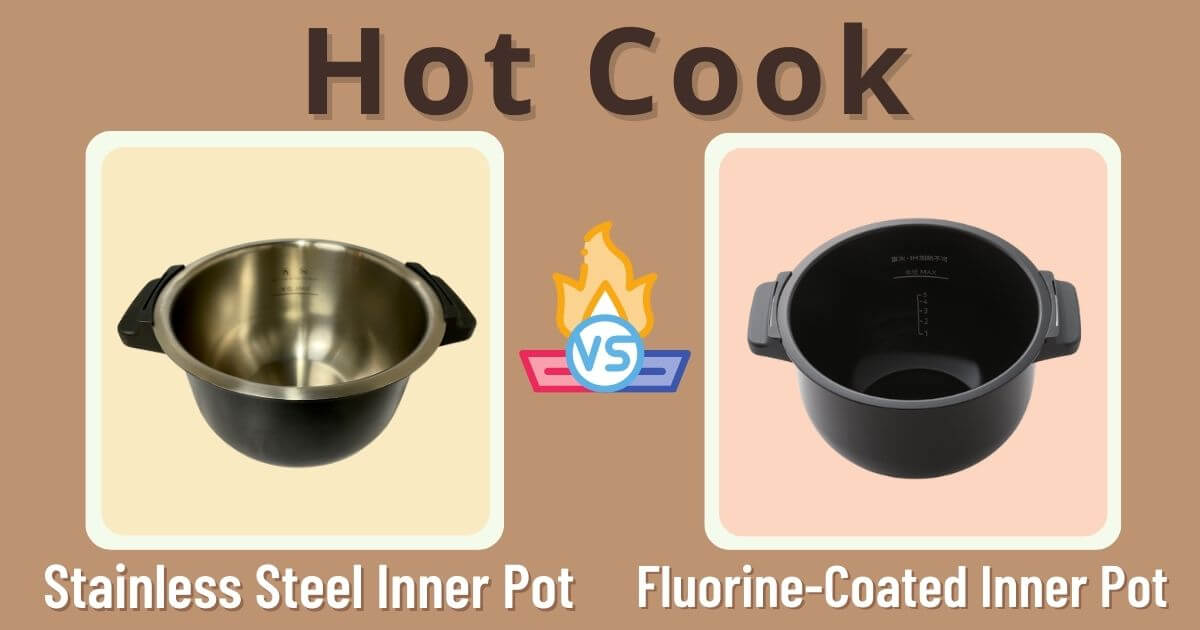The feature of the latest Sharp’s Hot Cook model is a fluorine-coated inner pot. The fluorine coating is supposed to make a clean-up of the inner pot dramatically easier.
In fact, the new model, which started selling in the fall of 2020, seems to be attracting a lot of attention as people are spending more time at home than before.
And thankfully, this fluorine-coated inner pot is also separately sold from the cookware, so even people using the older Hot Cook model with stainless steel inner pot can get the fluorine-coated inner pot only and use it.

We bought the new inner pot on the Internet last October without any hesitation! The purchase price at that time was 10,970 Japanese yen, including tax. And I’m so glad we bought it!
There are three types, one for 2.4L, one for 1.6L, and one for 1L, each sold separately, so if you buy the inner pot that matches the size of the old model you are currently using, you can use it from the day you receive it.
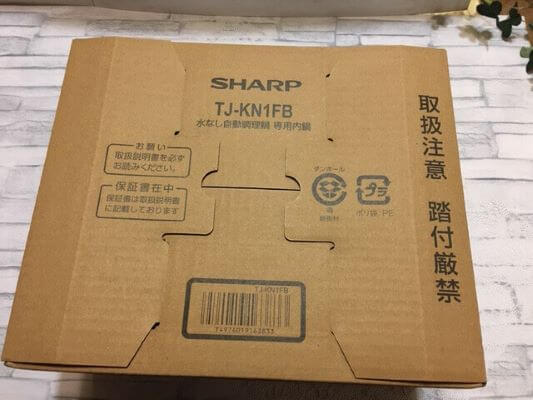

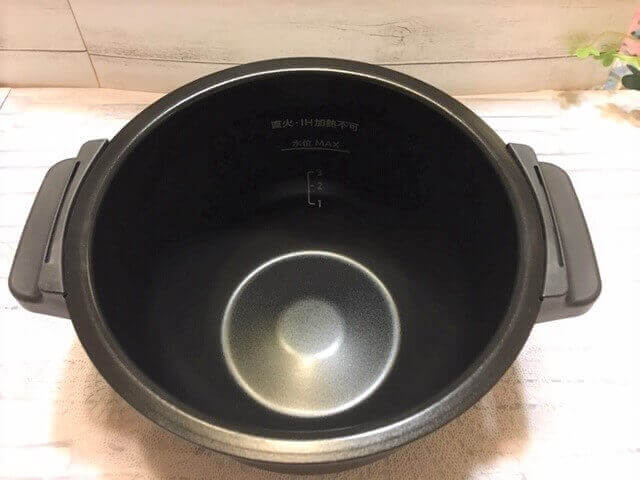
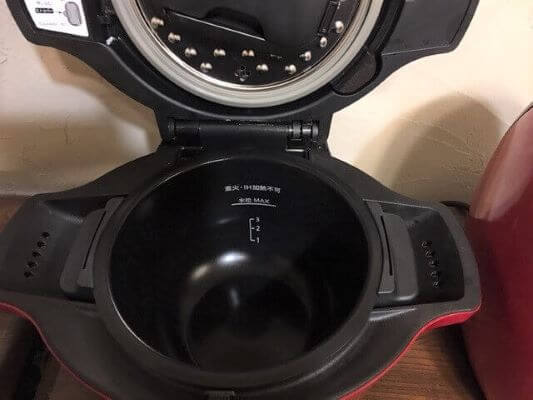
Photo: My family purchased the 1.6L size. It fit perfectly in our hot cooker.
Since we bought the old model KN-HW16D a year and a half ago, we have been using the Hot Cook almost every day. I have made more than 200 dishes with it so far.
Now that the fluorine-coated inner pot has come to my house, I can easily cook two dishes in one day using the Hot Cook.
So let’s get right to it. First of all, as a result of using the fluorine-coated inner pot, I compiled a simple table comparing stainless steel and fluorine-coated inner pot.

I will explain the points of fluorine-coated vs. stainless steel in the comparison table one by one later.
WHAT IS HOT COOK?
Hot Cook is Japanese popular cookware, waterless automatic cooking pot series, made by SHARP. Just put the ingredients in the pot and press the switch to automatically prepare a variety of dishes.
HOT COOK 1.6L size (for 2-4 people), Latest model with a fluorine-coated inner pot
- [Hot Cook, Fluorine-Coated Inner Pot] Impressions and reviews after using it for 3 months
- Verification 1 [Stainless Steel VS. Fluorine Coated Inner Pot] Cooking eggs, stir-fry without vegetables
- Verification 2 [Stainless Steel VS. Fluorine Coated Inner Pot] Stir-fried vegetables with low water content
- Verification 3 [Stainless Steel VS. Fluorine Coated Inner Pot] Stir-fried vegetables with high water content
- Verification 4 [Stainless Steel VS. Fluorine Coated Inner Pot] Cooking Risotto and Rice
- Verification 5 [Stainless Steel VS. Fluorine Coated Inner Pot] Sponge Cake
- Summary
[Hot Cook, Fluorine-Coated Inner Pot] Impressions and reviews after using it for 3 months
Point 1: The finishing of most dishes are almost the same in both inner pots
When I compared the two pots, I found that the quality, finish, and taste of low-temperature cooking of simmered dishes, curry, stew, soup, boiled dishes, steamed dishes, sauces, and roast beef were the same.
“Pork bowl” made with stainless steel pot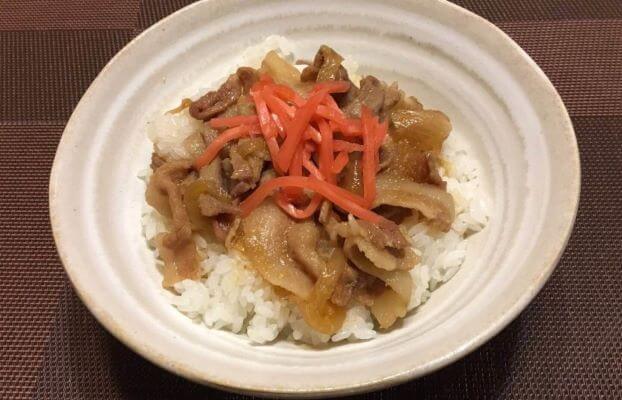
“Pork bowl” made in a fluorine-coated pot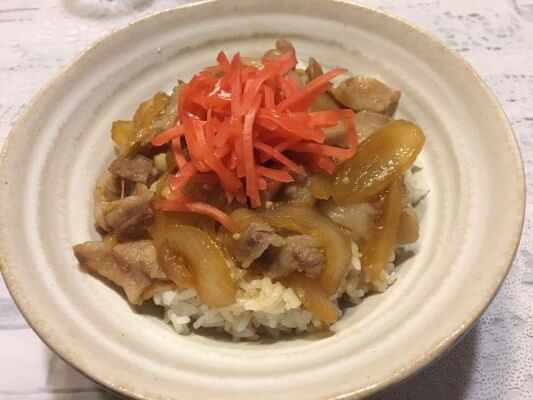
Point 2: Some menu items differ in the finish in the “Stir-fry” function
In Stir-fry, some dishes differ in finish between the stainless steel inner pot and the fluorine-coated inner pot. In particular, there is a big difference in the finish of recipes using “eggs.”
Point 3: Cleanup is much easier with fluorine-coated pots
Cleanup is much faster and easier with a fluorine-coated pot, for sure. The ingredients do not stick to the bottom of the pot, so all you have to do is rinse it with water and lightly wipe it with a sponge.
Point 4: It is very useful if you make two dishes in one day in the Hot Cook
Having two inner pots for the Hot Cook is very helpful when you cook two dishes in one day.
While one dish is cooking in the Hot Cook, you can prepare and put the ingredients for the next dish in the pot, and then turn the switch of the Hot Cook to prepare the rest.
If you have only one pot, you have to start by washing the inside of the pot.
Verification 1 [Stainless Steel VS. Fluorine Coated Inner Pot] Cooking eggs, stir-fry without vegetables
First, I compared the finished dishes of both inner pots by making “Crabmeat Omelet on Rice (Tenshin-Don).”
When I made Crabmeat Omelet on Rice, the finished results were completely different between the stainless steel inner pot and the fluorine-coated inner pot.
In the stainless steel pot, the egg was not made as I expected with half-boiled, and a lot of it stuck to the pot.
In addition, the cooked egg stuck more due to the potato starch and seasonings used, and it was hard to remove the stick even after soaking in water for a while.
Crabmeat Omelet on Rice cooked in the stainless steel pot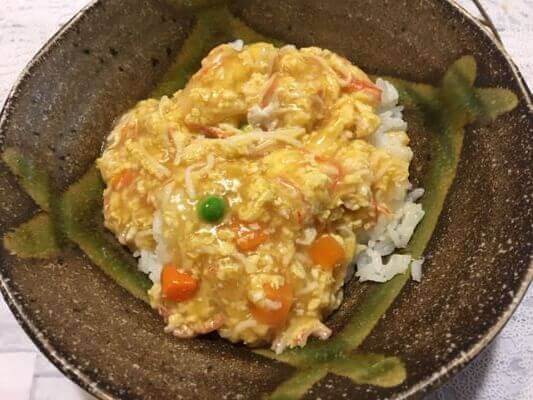
Bottom of the stainless steel pot after cooking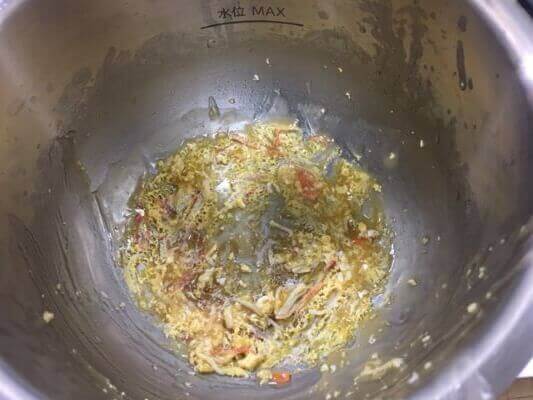
On the other hand, I was impressed with the Crabmeat Omelet on Rice cooked in the fluorine-coated inner pot, where the egg was cooked just right, and the omelet came out smoothly when I turned the pot over. After cooking, there was no stick on the bottom of the pot at all. Cleanup was very easy.
Crabmeat Omelet on Rice cooked in the fluorine-coated pot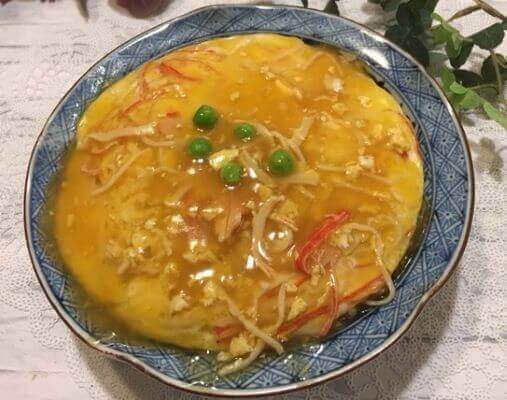
It just slid out of the inner pot!
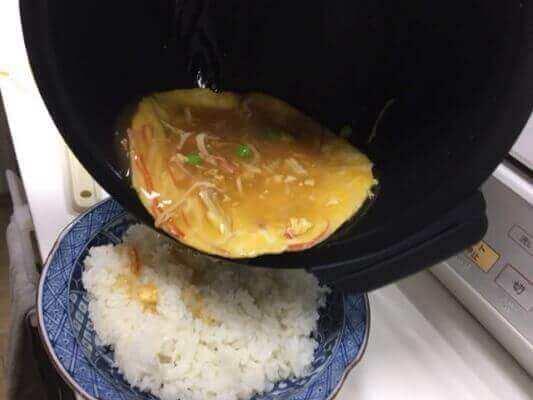
Bottom of the fluorine-coated pot after cooking
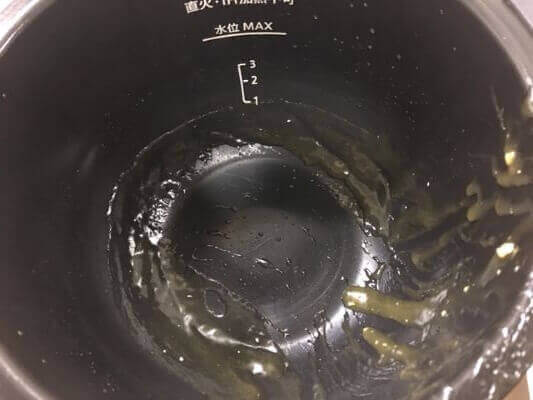
Next, I compared the inner pots by cooking “Fried Rice.”
When cooking Fried Rice, it takes much less effort if you use the fluorine-coated inner pot.
With stainless steel inner pot, you have to mix white rice and beaten eggs well before putting them in the pot; otherwise, many cooked eggs will stick to the pot. Furthermore, the stick is quite strong, so it takes time to wash it off.
Fried Rice cooked in the stainless steel pot
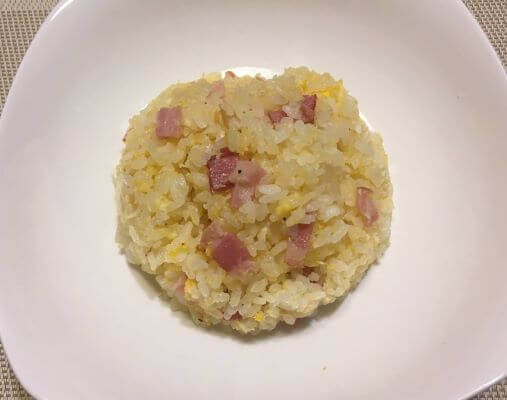
Bottom of the stainless steel pot after cooking
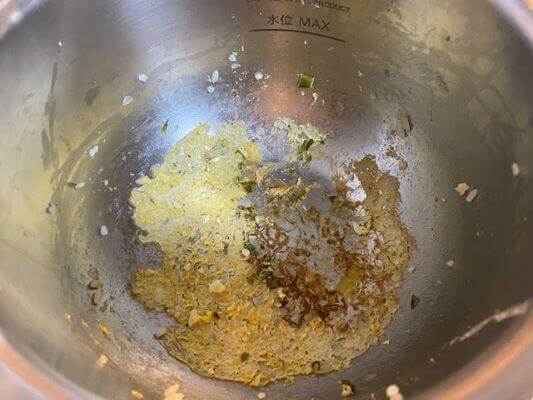
On the other hand, if you use the fluorine-coated inner pot, you can start by putting the beaten eggs in the pot first, then the white rice separately. The eggs will cook nicely and do not stick to the bottom of the pot.
Fried Rice cooked in the fluorine-coated pot
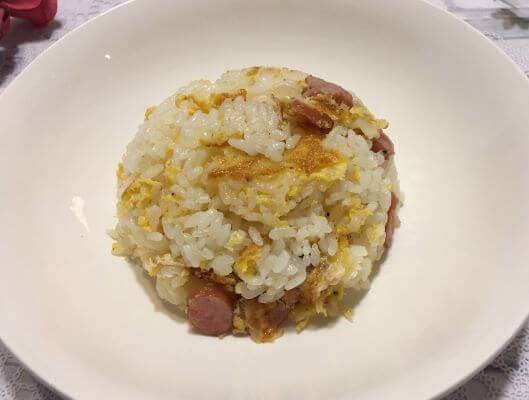
Bottom of the fluorine-coated pot after cooking

Verification 2 [Stainless Steel VS. Fluorine Coated Inner Pot] Stir-fried vegetables with low water content
This time, I compared the inner pots by cooking “Fried Pork and Carrots.”
The result and taste are the same whether you use a stainless steel pot or a fluorine-coated one.
The difference is that when you use the stainless steel inner pot, seasonings and potato starch stick to the bottom of the pot. Therefore, depending on the amount of seasoning, it was sometimes difficult to remove the stick even after soaking in water for a while.
Fried Pork and Carrots cooked in the stainless steel pot

Bottom of the stainless steel pot after cooking
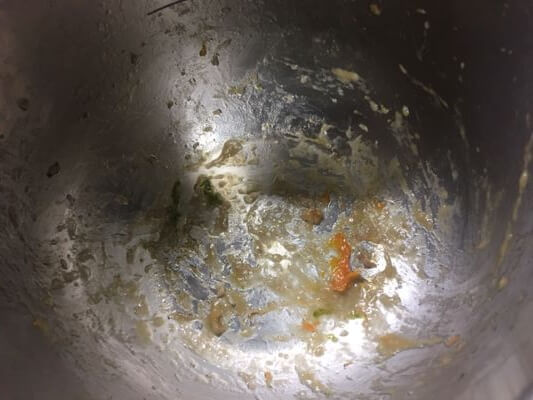
I could clean the fluorine-coated inner pot by just lightly washing it with a soft sponge.
Fried Pork and Carrots cooked in the fluorine-coated pot

Bottom of the fluorine-coated pot after cooking

just lightly washing it with a soft sponge
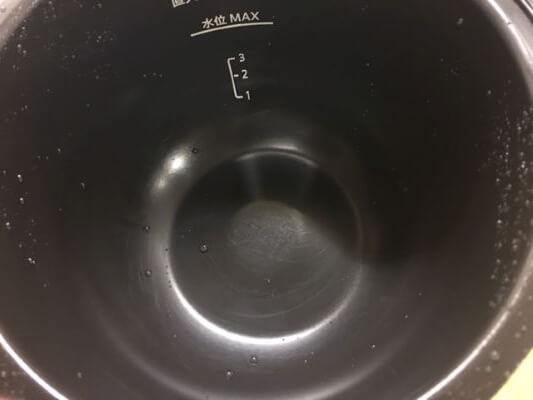
Verification 3 [Stainless Steel VS. Fluorine Coated Inner Pot] Stir-fried vegetables with high water content
Then, I compared them by making “Fried Pork and Bean Sprouts.”
The finished results and taste were the same for both stainless steel and fluorine-coated pots.
There is almost no problem with sticking the bottom of the stainless steel pot, but it takes a little more time to wash it than the fluorinated one.
Fried Pork and Bean Sprouts cooked in the stainless steel pot
Bottom of the stainless steel pot after cooking
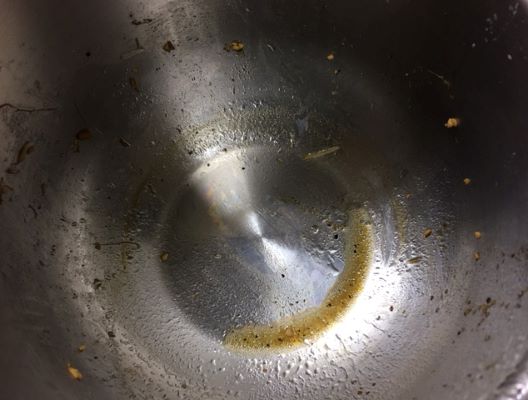
I could clean the fluorine-coated inner pot by just lightly washing it with a soft sponge.
Fried Pork and Bean Sprouts cooked in the fluorine-coated pot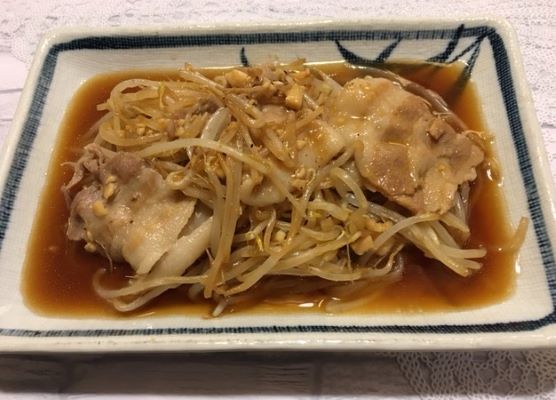
Bottom of the fluorine-coated pot after cooking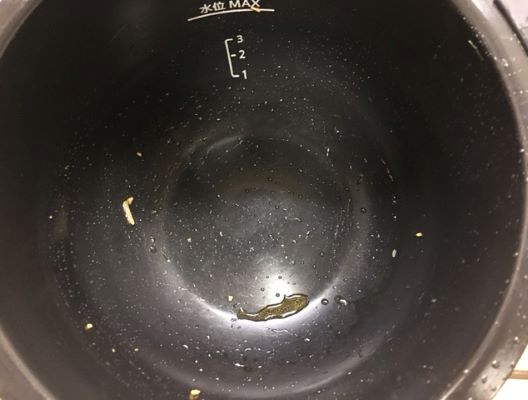
Verification 4 [Stainless Steel VS. Fluorine Coated Inner Pot] Cooking Risotto and Rice
As the 4th verification, I cooked white Rice and compared the results.
The result and taste are the same whether you use the stainless steel pot or the fluorinated one, and both were delicious.
However, after cooking, the bottom of the inner pot gets stuck when seasonings are added, such as Risotto, Pilaf, and Takikomi-Gohan. Having said that, I could easily remove the sticking by soaking it in water for a while.
White Rice cooked in the stainless steel pot
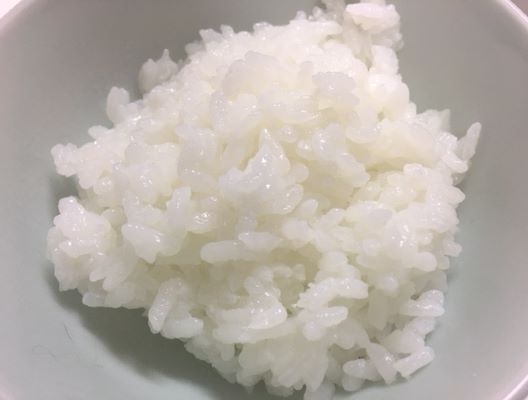
Bottom of the stainless steel pot after cooking
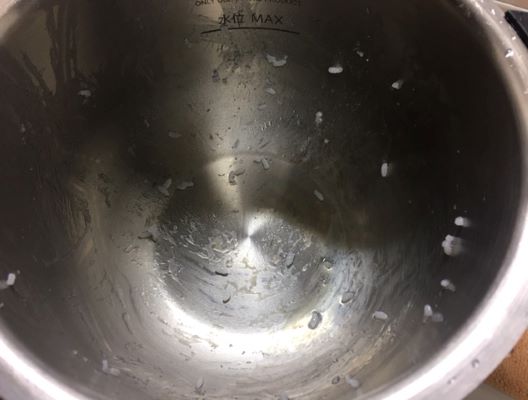
White Rice cooked in the fluorine-coated pot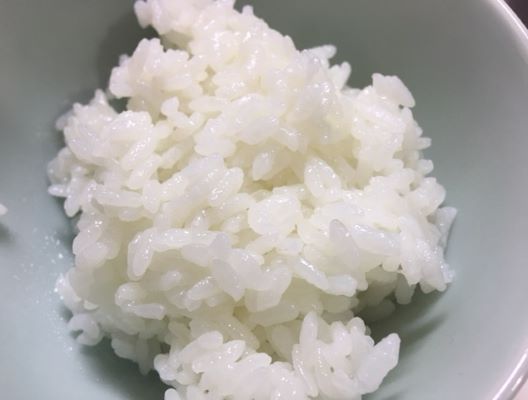
Bottom of the fluorine-coated pot after cooking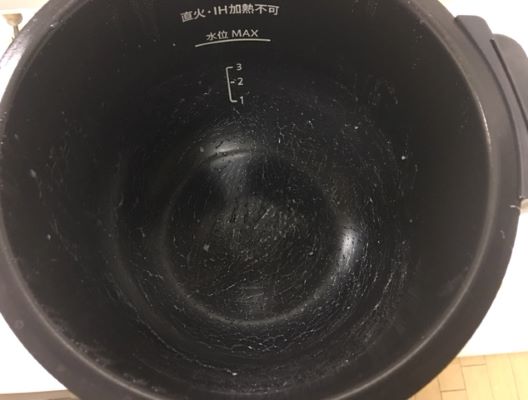
Verification 5 [Stainless Steel VS. Fluorine Coated Inner Pot] Sponge Cake
Finally, I compared the inner pots by making Sponge Cake.
The resulting taste is the same, but the surface color is different as the surface of the cake got stuck into the pot with the stainless steel one. However, the color difference is not a problem with this recipe since the cake will be coated with whipped cream later.
In both cases, the inside of the pot is buttered before baking the sponge cake.
When I turned the Hot Cook inner pot upside down after baking, the cake immediately slid out of the fluorine-coated pot.
On the other hand, the stainless steel pot was left upside down for about 15 minutes to cool down, and when I shook the pot from side to side. Then, the cake slid out of the pot.
I was able to remove the cake stuck on the bottom of the stainless steel pot by scraping it with a wooden spatula to avoid scratching the pot.
In the fluorine-coated pot, there was some burning on the inside of pot. But it could be removed easily by hand.
Sponge Cake cooked in the stainless steel pot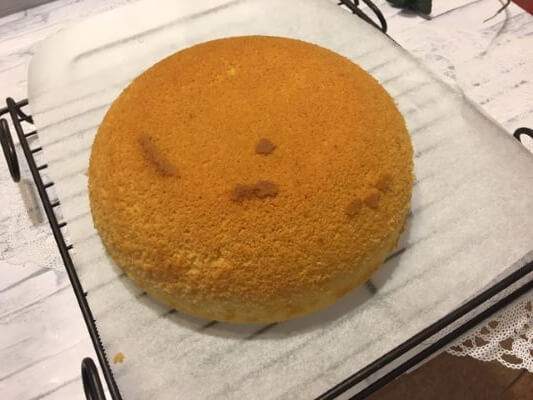
Bottom of the stainless steel pot after cooking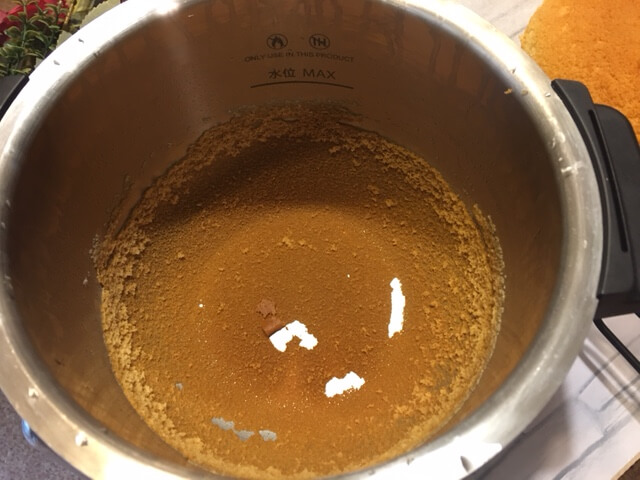
Sponge Cake cooked in the fluorine-coated pot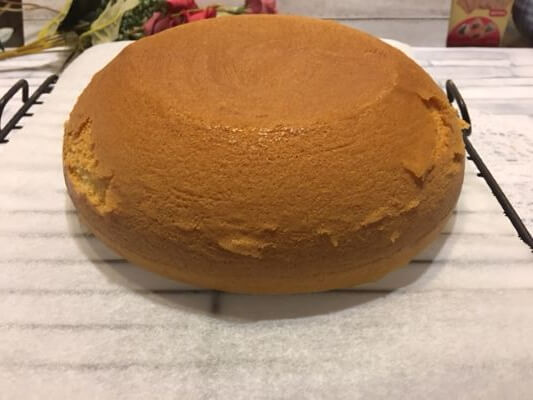
Bottom of the fluorine-coated pot after cooking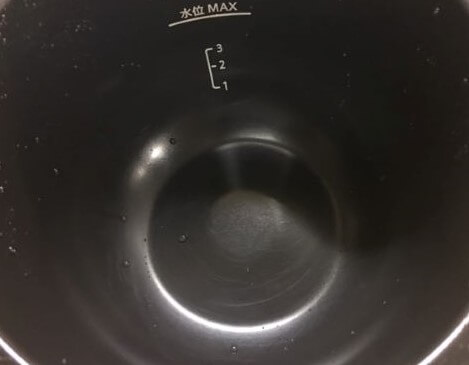
Summary
In this article, I have described my impressions and reviews of the fluorine-coated inner pot after using it for three months in our house. I have also shown the comparison results when cooked in a fluorine-coated inner pot and a stainless steel one.
The fluorine-coated inner pot has FB at the end of the model number. Please be careful when purchasing. F refers to “fluorine.”
Sharp TJ-KN1FB Inner Pot for Hot Cooks, 0.4 gal (1.6 L) Type, Fluorine Coating
Sharp TJ-KN2FB Inner Pot for Hot Cooks, 0.6 gal (2.4 L) Type, Fluorine Coating
Sharp TJ-KN05FB Inner Pot for Hot Cooks, (1.0 L) Type, Fluorine Coating
Since the arrival of the hot cooker in our house, our daily “food” has become really fun. Not only eating, but also cooking, trying to make dishes that are not in the official recipes, and so on!
In the past, I used to go out to restaurants and eat out a lot, but now I’m living a life of “homemade meals at home” every day. I will continue to write reviews of new dishes as I make them, along with the scores.
If you are interested, please click on the link below to see the top 30 menus out of the over 200 menus we have made at home so far!

I hope you enjoyed this article, and I hope you become a fellow Hot Cook!
Thank you for reading to the end!
HOTCOOK 1.6L size (for 2-4 people), Latest model with a fluorine-coated inner pot
HOTCOOK 2.4L size (for 2-6 people), Latest model with a fluorine-coated inner pot

